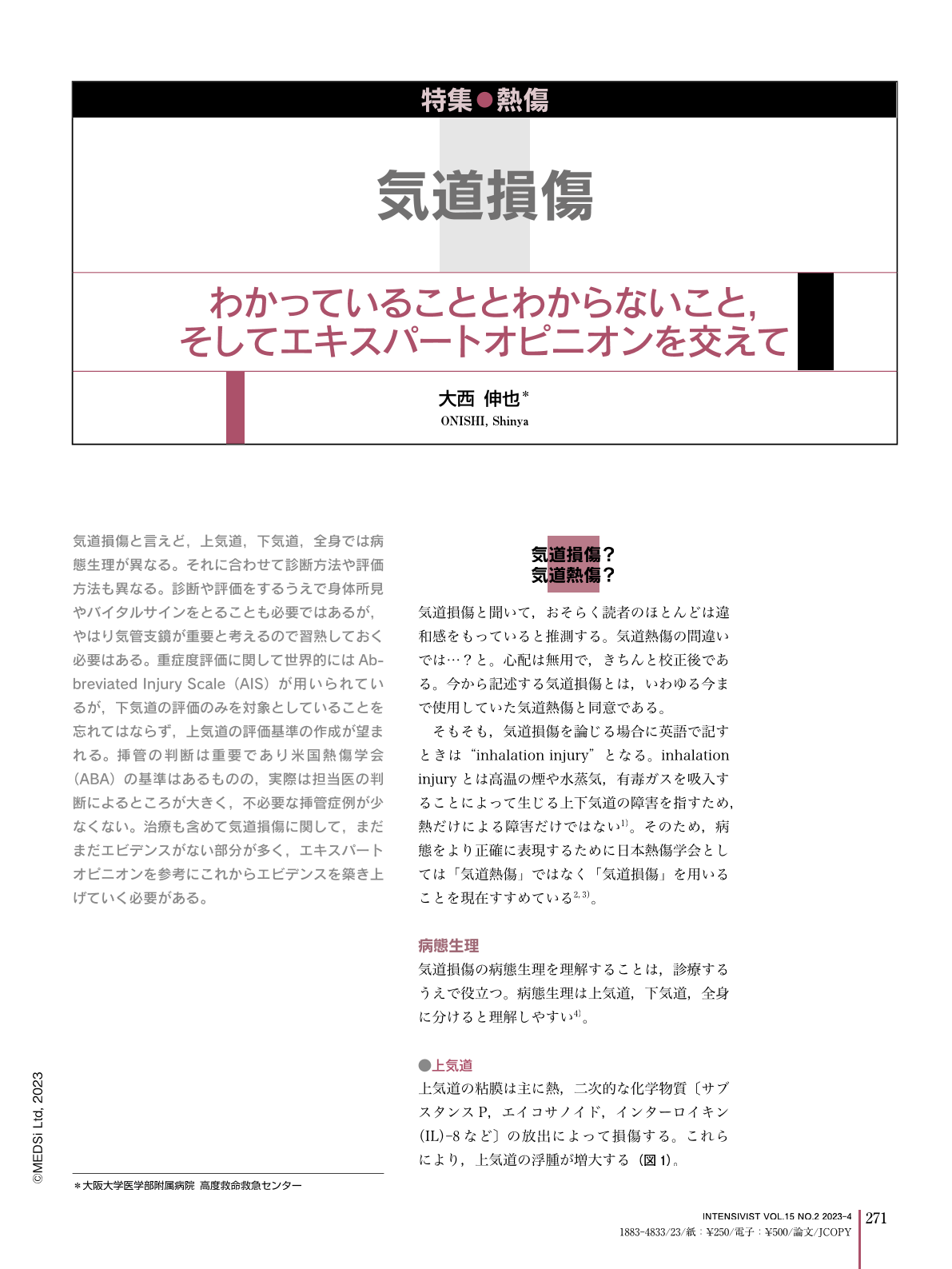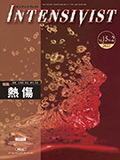Japanese
English
- 有料閲覧
- Abstract 文献概要
- 1ページ目 Look Inside
- 参考文献 Reference
気道損傷と言えど,上気道,下気道,全身では病態生理が異なる。それに合わせて診断方法や評価方法も異なる。診断や評価をするうえで身体所見やバイタルサインをとることも必要ではあるが,やはり気管支鏡が重要と考えるので習熟しておく必要はある。重症度評価に関して世界的にはAbbreviated Injury Scale(AIS)が用いられているが,下気道の評価のみを対象としていることを忘れてはならず,上気道の評価基準の作成が望まれる。挿管の判断は重要であり米国熱傷学会(ABA)の基準はあるものの,実際は担当医の判断によるところが大きく,不必要な挿管症例が少なくない。治療も含めて気道損傷に関して,まだまだエビデンスがない部分が多く,エキスパートオピニオンを参考にこれからエビデンスを築き上げていく必要がある。
The pathophysiology of inhalation injury differs among upper airway, lower airway, and systemic injuries. Diagnostic and evaluation approaches differ accordingly. Although physical examination and vital signs are necessary for diagnosis and evaluation, bronchoscopy is still considered important, so it is necessary to be familiar with this technique. Although the Abbreviated Injury Scale score is used worldwide to evaluate the severity of injury, it is important to remember that it only evaluates the lower respiratory tract, and it is desirable to develop evaluation criteria for the upper respiratory tract. The decision to perform intubation is important, and although there are American Burn Association standards, the actual decision to intubate depends largely on the judgment of the physician in charge, and there are many situations resulting in unnecessary intubation. There is still a lack of evidence regarding inhalation injury, including treatment, and it is necessary to build up evidence from now on with reference to expert opinions.

Copyright © 2023, MEDICAL SCIENCES INTERNATIONAL, LTD. All rights reserved.


